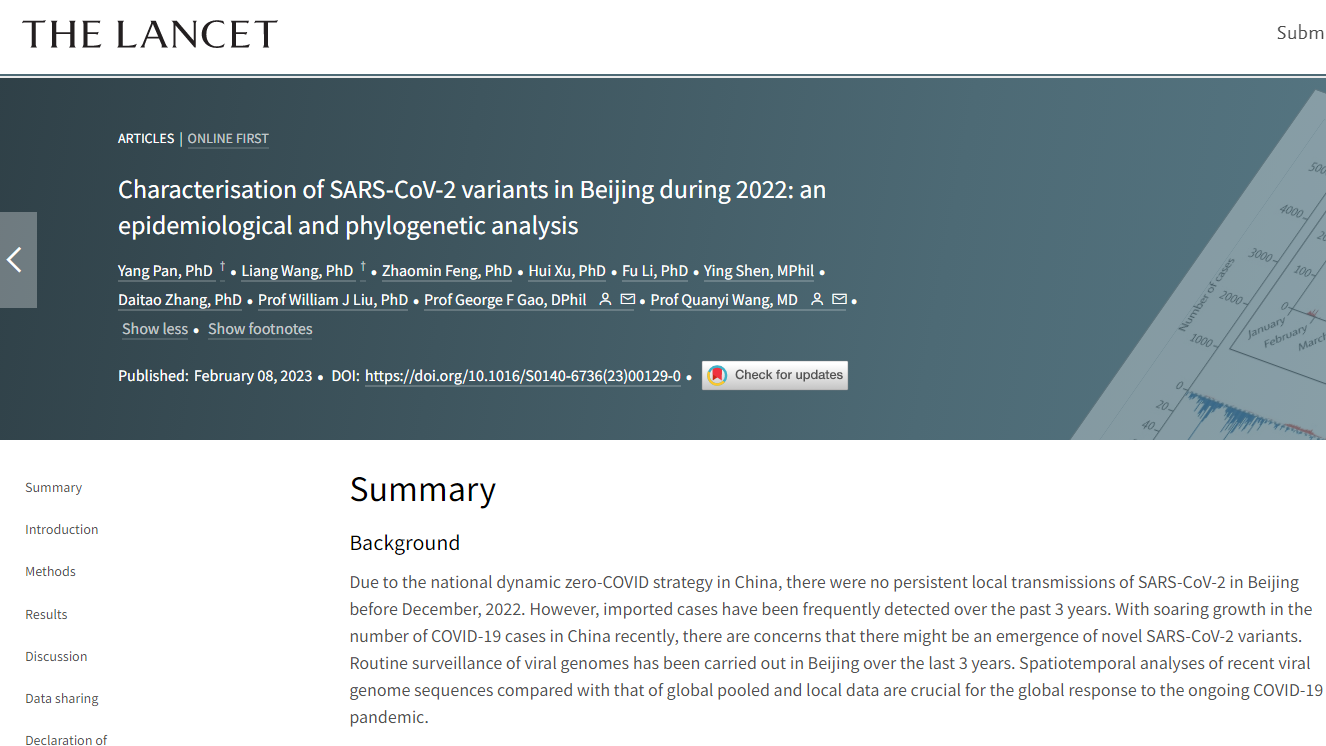
The co-circulation of two pre-existing Omicron subvariants, BA.5.2 and BF.7, were dominant in Beijing from November to December 2022, and there is no evidence that any new variants emerged, a group of scientists wrote in the Lancet journal published on Wednesday.
The study is supported by the National Key Research and Development Program of China and the Strategic Priority Research Program of the Chinese Academy of Sciences.
Researchers sequenced 413 samples in Beijing from November 14 to December 20, 2022, including 350 local cases and 63 imported cases, and found that 315 of 350, 90 percent of local cases were caused by BA.5.2 and BF.7.
The study concluded that "the co-circulation of BF.7 and BA.5.2 in the current outbreak in Beijing and did not observe the existence of any novel variants. This study could be considered a snapshot of China, due to both the frequent population exchange and the circulating strains with high transmissibility."
The authors said that the study has some limitations. "Only the epidemic and viral genetic data in Beijing in 2022, rather than the rest of the Chinese mainland, were analyzed," said the authors, but adding that their dataset represented the real-world data well.
"The number of laboratory-confirmed COVID-19 cases in December, 2022, was unavailable since large-scale nucleic acid testing has been adjourned," said the study. "And the actual number of infections would likely be underestimated, which will also lead to a certain degree of sampling bias in our dataset.
Researchers said that more sampling is required for investigation of the competitive transmission power and pathogenicity of Omicron subvariants.